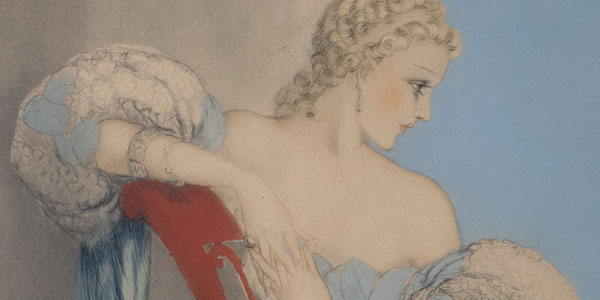Louis Justin Laurent Icart (1890-1950) was born in Toulouse, a culturally rich city in the South of France, in 1890. Icart entered the I’Ecole Superieure de Commerce de Toulouse in order to study business, particularly banking, which was the profession of his father. He soon discovered the play writings of Victor Hugo and it was through his love of theatre that he developed a taste for the arts, though his urge to paint was not as strong as his yearning to act. It was not until Icart’s move to Paris in 1907 that he would begin to concentrate on painting and drawing.
He lived in New York City in the 1920’s where he became known for his Art Deco color etchings of glamorous women. Art Deco was a phrase coined at the 1925 Paris Exposition des Arts Decoratifs. By the late 1920’s Icart was working for both publications and major fashion and design studios. As such he became very successful, both artistically and financially. His etchings reached their height of brilliance in this era of Art Deco.
Although Icart created for us a picture of Paris and New York life in the 1920’s and 1930’s, he worked in his own style derived from such eighteenth century masters as Jean Honore Fragonard. In Icart’s paintings one sees the impressionists Degas and Monet, along with Symbolists Odilon Redon and Gustave Moreau in his rare watercolors. Nonetheless, Icart’s Parisian scenes are nearly as popular today as they were when they were first produced.
Icart’s portrayal of women is sensuous and yet always shows an element of humor, which is as important as the implied or direct sexuality. The beautiful courtesans cavort on rich, thick pillows and their facial expressions projecting passion. For the women of Louis Icart are the women of France as we have imagined them to be, all wrapped up in an irresistible package. Icart died in Paris in 1950.

